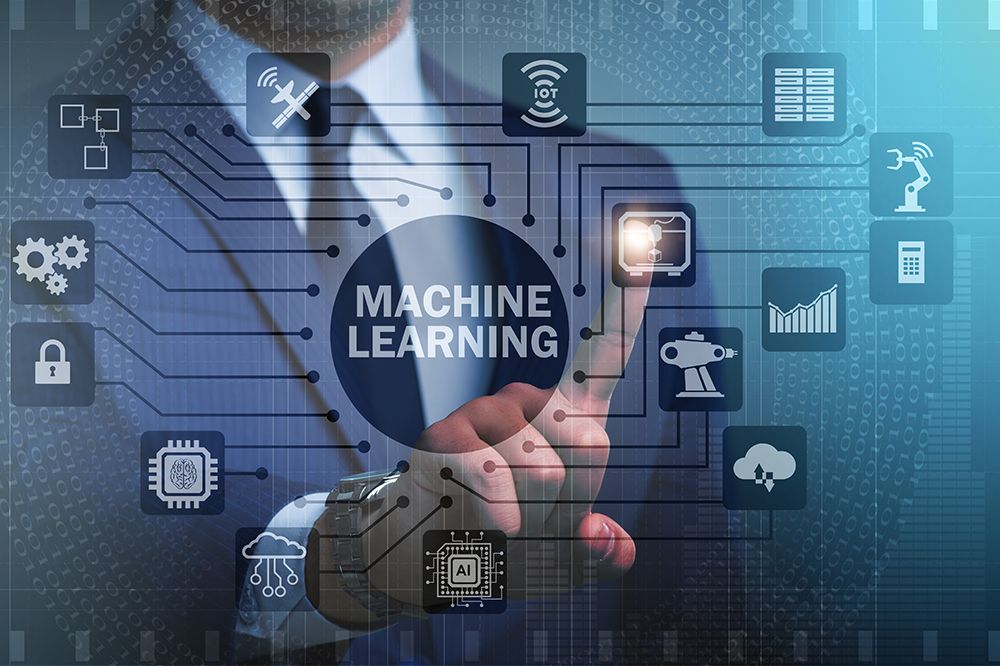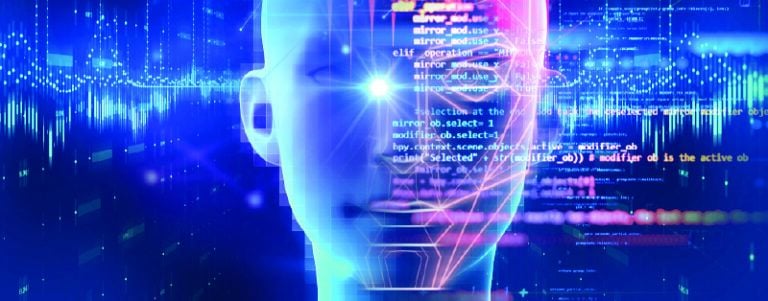What is Reinforcement Learning? An Essential Guide for Tech Professionals

- What is Reinforcement Learning?
- How Does Reinforcement Learning Differ From Other Machine Learning Techniques?
- What are the Main Components of a Reinforcement Learning System?
- How Does Reinforcement Learning Handle the Exploration-Exploitation Trade-Off?
- What are Some Real-World Applications of Reinforcement Learning?
- Can Reinforcement Learning be Combined With Other Machine Learning Approaches?
What is reinforcement learning, and why is it important for a working professional to know about its application? In the domain of AI and Machine Learning (ML), it is a cornerstone in the vast landscape of ML algorithms. Besides, the reward-based learning mechanism stands out as a unique method among its peers. Furthermore, in the AI skill ecosystem, machine learning remains an essential area in learning and upskilling. Let’s look at how reinforcement learning will help professionals gain an edge over their peers.
What is Reinforcement Learning?
Reinforcement learning is a dynamic and adaptive process within machine learning algorithms that focuses on how agents, such as a computer program or a software for example, ought to take action in a specific environment to gain a reward. If, on the other hand, the action does not lead to the desired outcome, the agent receives feedback in the form of a punishment. Moreover, reinforcement learning focuses on interaction, adapting based on the outcomes of its actions, which is a testament to the power of reward-based learning. Consequently, this method plays a pivotal role in the development of intelligent systems that improve with experience.
How Does Reinforcement Learning Differ From Other Machine Learning Techniques?

So, what is reinforcement learning in the context of the AI landscape and what distinguishes it from other ML techniques? Here’s a breakdown of the major differences.
A. Objective
The objective of machine learning is generally centered on developing algorithms capable of making accurate predictions or classifications from historical data. In contrast, reinforcement learning focuses on enabling agents to make a series of decisions aimed at maximizing rewards over time, highlighting its goal-oriented nature.
B. Supervision
When it comes to supervision, traditional ML often relies on supervised learning, where models are trained using labeled data sets to learn the correlation between input data and the correct output. On the other hand, reinforcement learning adopts a reward-based learning approach. This method is less about direct supervision through labeled data and more about learning from the consequences of actions, using rewards or penalties to guide learning.
C. Training Data
Regarding training data, machine learning algorithms typically require a predefined data set consisting of input features and corresponding target labels. However, deep reinforcement learning breaks away from this norm by leveraging interactions with an environment as its learning medium. Furthermore, the agent learns by engaging in actions and observing the outcomes, thereby receiving feedback that is inherently dynamic and contingent on the agent’s actions.
ALSO READ: Difference Between Data Science, Artificial Intelligence and Machine Learning
D. Feedback
Feedback mechanisms also differ significantly between the two. In machine learning, the model adjusts its parameters based on feedback aimed at minimizing prediction errors. Conversely, reinforcement learning provides feedback in the form of rewards or punishments, encouraging the agent to pursue strategies that increase the cumulative reward.
E. Typical Use Cases
The typical use cases for each approach underscore their differences. Machine learning is widely applied in domains such as image recognition, natural language processing, and recommendation systems. However, reinforcement learning shines in applications requiring sequential decision-making and strategy optimization, such as autonomous vehicle navigation, game-playing, and supply chain optimization.
This distinction highlights the adaptive, interactive nature of what is reinforcement learning, setting it apart as a cornerstone of innovative AI solutions.
What are the Main Components of a Reinforcement Learning System?
Unlike traditional machine learning algorithms, reinforcement learning in machine learning is characterized by its dynamic interaction with the environment, guided by the principles of reward-based learning. This system comprises several critical elements, each playing a vital role in the agent’s learning process.
1. Policy
A policy is fundamental to understanding what is reinforcement learning, acting as the strategy that dictates the agent’s actions based on the current state of the environment. It is akin to a set of rules that guides the agent’s behavior, determining how it reacts to various situations. Whether through a simple function or complex computation, the policy is the decision-making core of the agent.
2. Reward Function
The reward function sets the objectives for the agent, mapping states or state-action pairs to rewards that indicate the desirability of each state. This function is what drives the agent to make decisions that accumulate the maximum reward over time, serving as the immediate metric of success or failure for its actions.
ALSO READ: Machine Learning vs. AI: The Top 5 Key Differences to Know About
3. Value Function
The value function extends the concept of immediate rewards to a long-term perspective, estimating the total amount of reward the agent can expect to accumulate from a given state. This distinction between immediate and future rewards helps the agent evaluate the long-term consequences of its actions, emphasizing the strategic aspect of deep reinforcement learning.
4. Environment Model
A model of the environment may be included, allowing the agent to predict the consequences of its actions without directly interacting with the environment. This model facilitates planning by simulating potential future states and rewards, providing a framework for the agent to explore various strategies in a controlled manner.
Together, these components form the backbone of the understanding of what is reinforcement learning for a system, enabling it to learn from interactions and adapt its strategies to maximize rewards. This dynamic and interactive approach sets reinforcement learning apart, showcasing its potential to tackle complex decision-making tasks that are beyond the reach of traditional machine learning algorithms.
ALSO READ: The Top 7 Machine Learning Courses in India You Should Know About
How Does Reinforcement Learning Handle the Exploration-Exploitation Trade-Off?

The balance of exploration and exploitation is instrumental in the realm of reinforcement learning in machine learning, guiding agents toward optimal decision-making. Let’s examine the mechanisms of exploration, exploitation, and the epsilon-greedy policy, highlighting their roles within what is reinforcement learning, reward-based learning, and deep reinforcement learning.
1. Exploration
In reinforcement learning, exploration is key to uncovering new knowledge and potential rewards within the environment. It enables the agent to venture beyond its current understanding, potentially discovering more lucrative strategies. Moreover, exploration is essential for the agent’s growth, allowing it to compile valuable insights about previously untried actions. Therefore, this aspect is fundamental for broadening the agent’s experience and enhancing its decision-making capabilities over time.
2. Exploitation
On the other hand, exploitation focuses on maximizing immediate rewards based on the agent’s accumulated knowledge. This strategy prioritizes actions believed to offer the highest rewards according to current estimations. Furthermore, exploitation optimizes the use of known information but risks neglecting better options yet to be discovered. Hence, while exploitation can provide consistent rewards, it might also limit the agent’s potential by confining it to familiar paths.
3. Epsilon-Greedy Policy
To navigate the exploration-exploitation dilemma, the epsilon-greedy policy introduces a probabilistic approach. This policy dictates that the agent will explore with a certain probability (epsilon) and exploit with a probability of 1-epsilon. As a result, the agent periodically ventures into new experiences while also leveraging known strategies to secure rewards. Consequently, the epsilon-greedy policy ensures a balanced approach, preventing the agent from leaning too heavily toward either exploration or exploitation, thereby fostering a more effective learning process in the context of deep reinforcement learning.
ALSO READ: How AI Automation is Just What Businesses Need to Future-Proof Their Success
What are Some Real-World Applications of Reinforcement Learning?
The best way to further understand what is reinforcement learning is to go beyond theoretical concepts to practical implementations. We see this in self-driving cars, industry automation, trading, and finance. Furthermore, each application showcases the synergy of machine learning algorithms, reward-based learning, deep reinforcement learning, and reinforcement learning in machine learning to solve complex real-world problems.
1. Applications in Self-Driving Cars
Reinforcement learning revolutionizes autonomous driving by optimizing trajectory, motion planning, and dynamic pathing. For instance, AWS DeepRacer demonstrates how reinforcement learning models, through visual inputs and reward-based learning, navigate physical tracks, illustrating deep reinforcement learning’s potential in enhancing autonomous vehicle technologies.
2. Industry Automation With Reinforcement Learning
In industrial settings, reinforcement learning boosts efficiency and safety. For example, consider DeepMind’s utilization of AI agents to optimize Google Data Centers’ cooling systems and achieve a substantial reduction in energy consumption. It exemplifies how reinforcement learning can streamline operations and reduce costs in industrial environments.
3. Reinforcement Learning in Trading and Finance
The finance sector benefits from reinforcement learning through automated trading systems that decide when to buy, hold, or sell stocks, optimizing financial transactions based on market benchmarks. Additionally, IBM’s reinforcement learning-based platform highlights the application’s potential to bring consistency and improved decision-making to financial trading.
4. Reinforcement Learning in Natural Language Processing (NLP)
NLP applications, including text summarization, question answering, and machine translation, are enhanced by reinforcement learning. By selecting relevant information to answer questions or to optimize translation processes, reinforcement learning introduces efficiency and accuracy improvements in processing and understanding natural language.
5. Reinforcement Learning Applications in Health Care
Reinforcement learning enables personalized treatment plans through dynamic treatment regimes, automated medical diagnosis, and optimizing treatment strategies for chronic diseases. Moreover, this application demonstrates reinforcement learning’s capacity to improve patient outcomes by leveraging historical data to make informed treatment decisions.
ALSO READ: How to Successfully Implement Machine Learning in Business: Top Tips
Can Reinforcement Learning be Combined With Other Machine Learning Approaches?
The integration of reinforcement learning with other machine learning approaches reveals its versatility and potential for enhanced learning capabilities.
1. Supervised Learning
Supervised learning’s structured approach, which utilizes labeled data for predictions, can significantly augment reinforcement learning in machine learning. By pretraining reinforcement learning agents or employing hybrid models, the combination can accelerate learning processes, enhancing performance in tasks like face recognition or disease diagnosis. Furthermore, auxiliary tasks provide additional guidance, improving the agent’s predictive accuracy and efficiency.
2. Unsupervised Learning
Unsupervised learning, known for its capability to unearth patterns from unlabeled data, complements reinforcement learning by enriching exploration and data representation. Besides, this partnership enhances reward-based learning, enabling agents to navigate and understand environments more effectively. Thus, techniques like representation learning and data augmentation expand the agent’s knowledge base, fostering a more generalized understanding of the state space.
3. Deep Learning
Deep learning’s prowess in handling complex, nonlinear functions through artificial neural networks makes it a formidable ally for deep reinforcement learning. Hence, by leveraging deep learning for function approximation, reinforcement learning agents can process high-dimensional data, leading to more nuanced decision-making strategies. As a result, model-based learning and meta-learning further empower agents, allowing for predictive modeling and swift adaptation to new challenges.
ALSO READ: Top 5 Most Common Machine Learning Techniques Used in Stock Prediction
In the age of the data revolution, the only way to stay ahead is to harness data’s potential. Therefore, if you want to dive deeper into the practicality of reinforcement learning, Emeritus is the way to go. So, enroll in our artificial intelligence courses and machine learning courses for that much-needed gateway to specialization.
Write to us at content@emeritus.org





